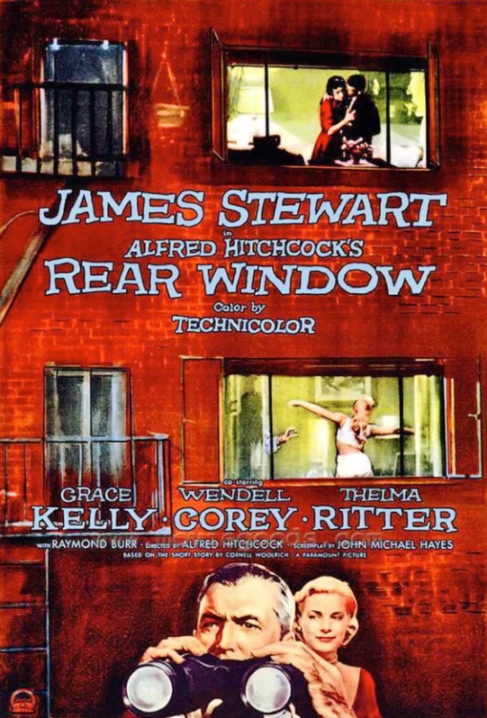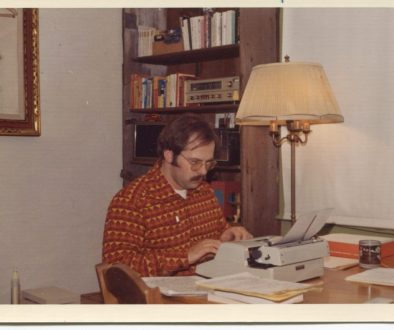“Rear Window” – Two views
Read the book, skip the movie. It’s a common perception of Hollywood book treatments. Well, today’s review is an exception. Here’s the back story.
I was watching Alfred Hitchcock’s “Vertigo” and came across a mention (I research the heck out of everything!) of another of his great movies, “Rear Window.” Researching a little more I found that “Rear Window” was based on a short story by one of my favorite old suspense novelists, Cornell Woolrich. So I went to the library and checked out the Cornell Woolrich Omnibus collection of stories and novels and the DVD movie “Rear Window.”

The film was familiar to me from having watched it several times before, but the short story, which I was reading for the first time, was considerably different from what I remembered of the screen version. It left me puzzling over a number of scenes. Finished reading, I was really looking forward to watching the movie again to see just how much they really differed and how much they were alike.
After viewing I concluded the movie version was far superior to the print version Woolrich wrote, in several respects. It was like Woolrich wrote a detailed block outline for a story, or perhaps even a novel, and this was the final result. It was flat as a pancake. There was no character development, the plot occasionally evoked an unbelievable smirk, and it seemed as though he had to insert a few deus ex machina moments in order to make the story hang together.
By contrast, the movie script was skillfully, meticulously, fully developed. Jimmy Stewart played lead role – and on this point the differences between the two versions began. Woolrich waits to tell us why Jeff (we don’t even know his name for a third of the tale) was confined to a wheelchair in this tiny apartment looking out his rear window, surrounded by a courtyard of rear windows, until the very end of the story (the writer in me asks, Was this a first draft?) whereas the movie shows us exactly what happened to him in the opening scenes. Now we have a full grasp of what he does for work and how he got injured. Grace Kelly as his under-appreciated girlfriend is lovely and the counterpoint between the two – the hard-working, almost blue-collar personality of the photographer versus the gorgeous, privileged society girl – is just great, especially when she sensuously attacks him with kisses.
The movie script was written by one John Michael Hayes, who really did demonstrate how Woolrich’s short story was little more than a bare skeleton of the screenplay. I wondered why the movie people wasted the time, effort and money to acquire Woolrich’s short story – except perhaps for his imprimatur. (Not to take anything away from Woolrich: he wrote great pulp fiction and died nearly a millionaire. And by the way, Woolrich based the short story on his own injury, losing a foot to disease and being cooped up in a leg cast and wheelchair, just like Jeff.)
There are just so many signs of nuance in the film, from Jeff being a photographer so he could use his camera’s long lens to spy on the half-naked female dancer, to the composer at his piano, to Grace Kelly’s rolling up her sleeves to help with the investigation. to Wendell Corey, the wry skeptical cop who thinks it’s just a figment of his war buddy’s imagination, to the gripping portrayal of the murderer by Raymond Burr (famous for the Perry Mason TV series), to the Hitchcockian dramatic tension toward the end – the whole thing is just a high-class film.

Highly recommended. It has not aged. Skip the short story, watch the 1954 original film version. “Rear Window” was remade in 1988, starring Christopher Reeve and Daryl Hannah. I have not seen it, but apparently it was a made-for-TV movie and earned only a 5.4 rating on IMDB; the Hitchcock version rates at 8.4. Read your own tea leaves on that.




